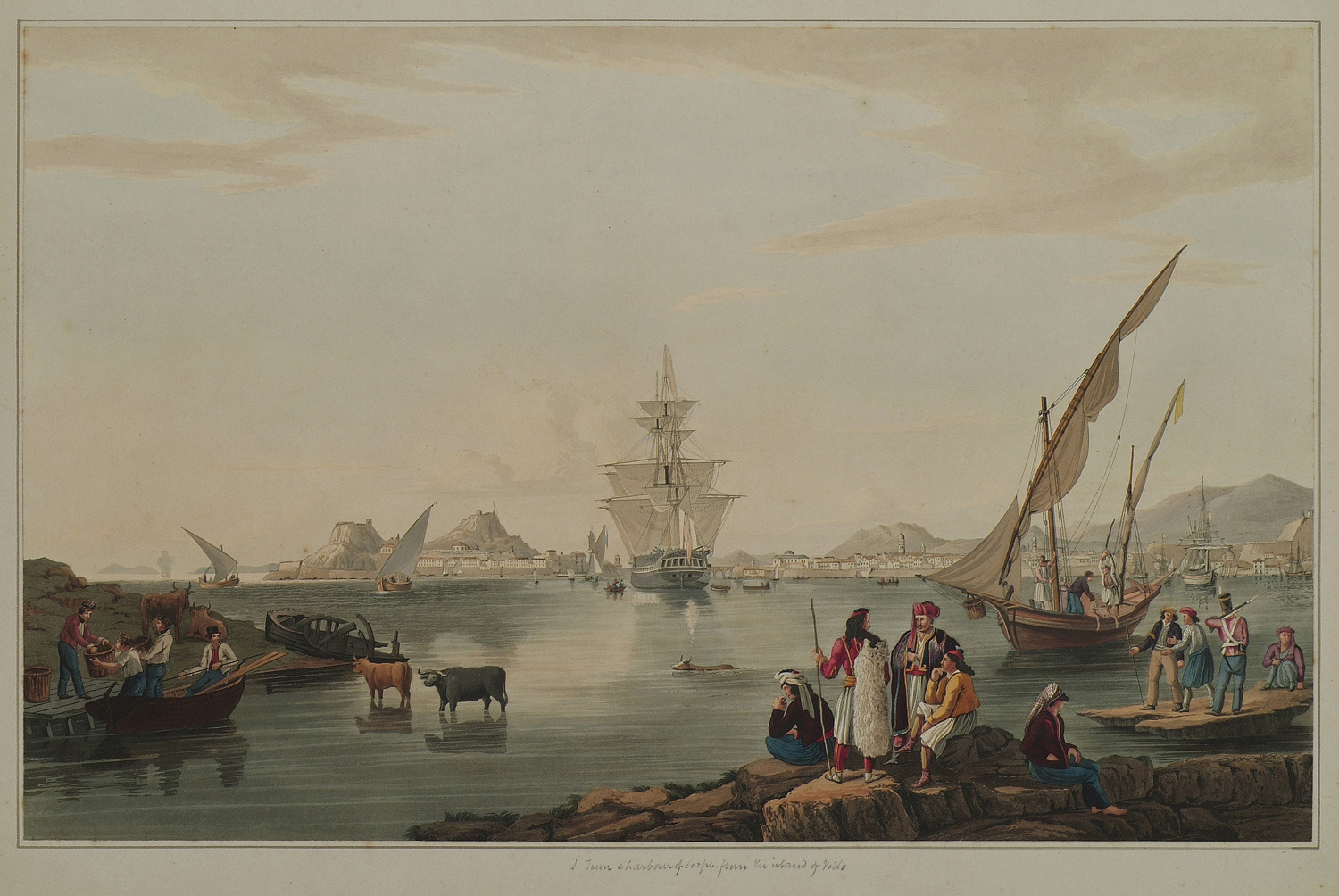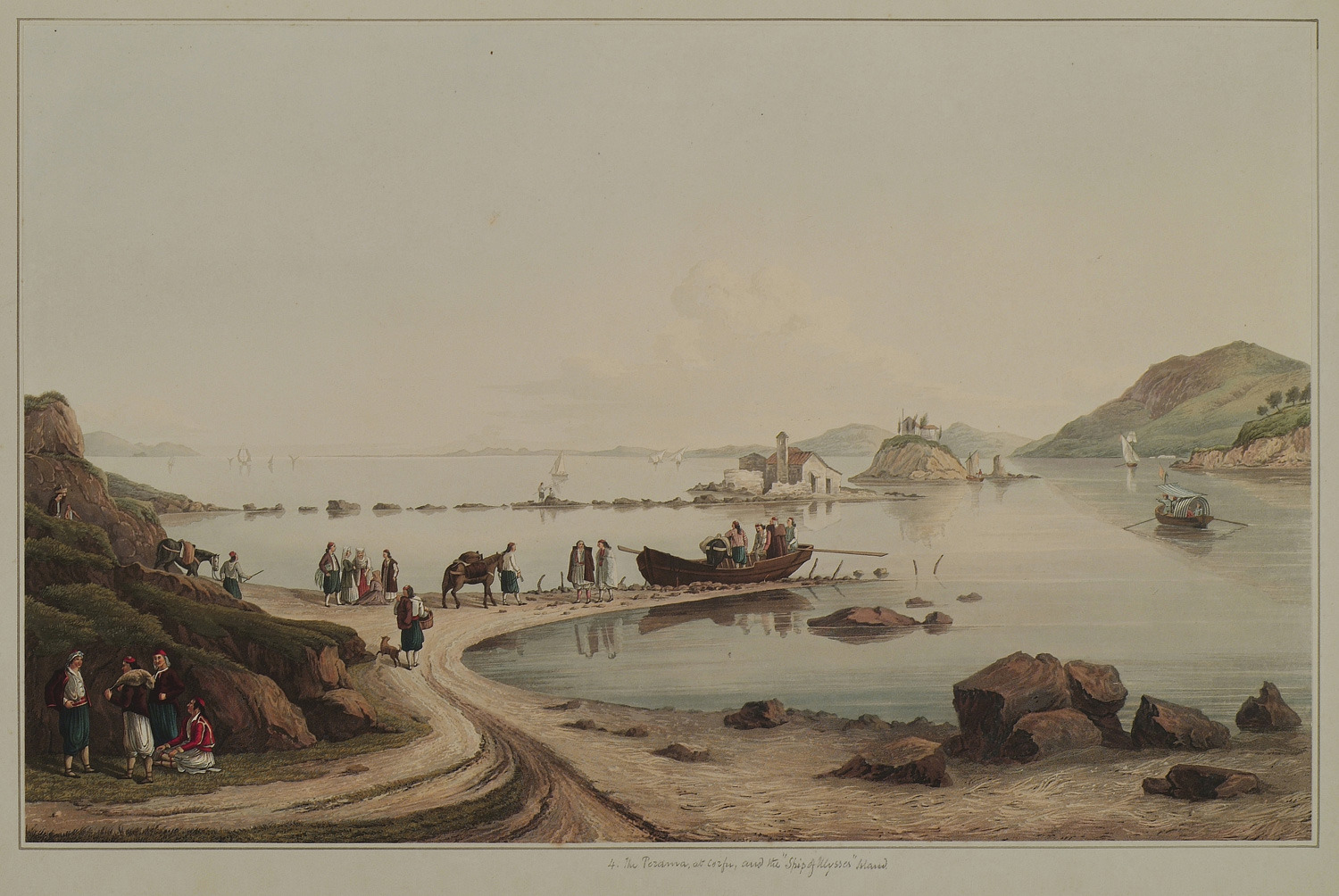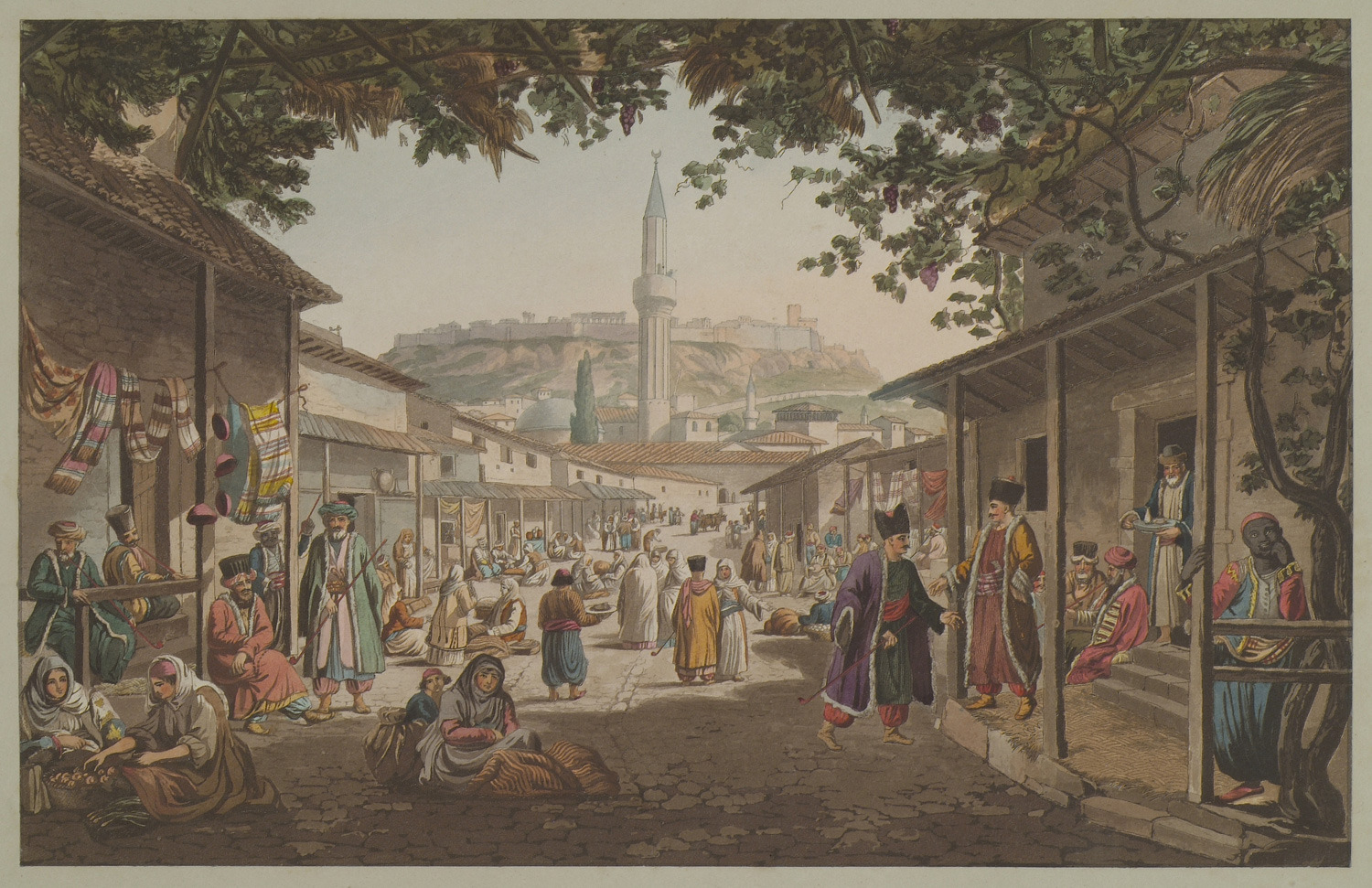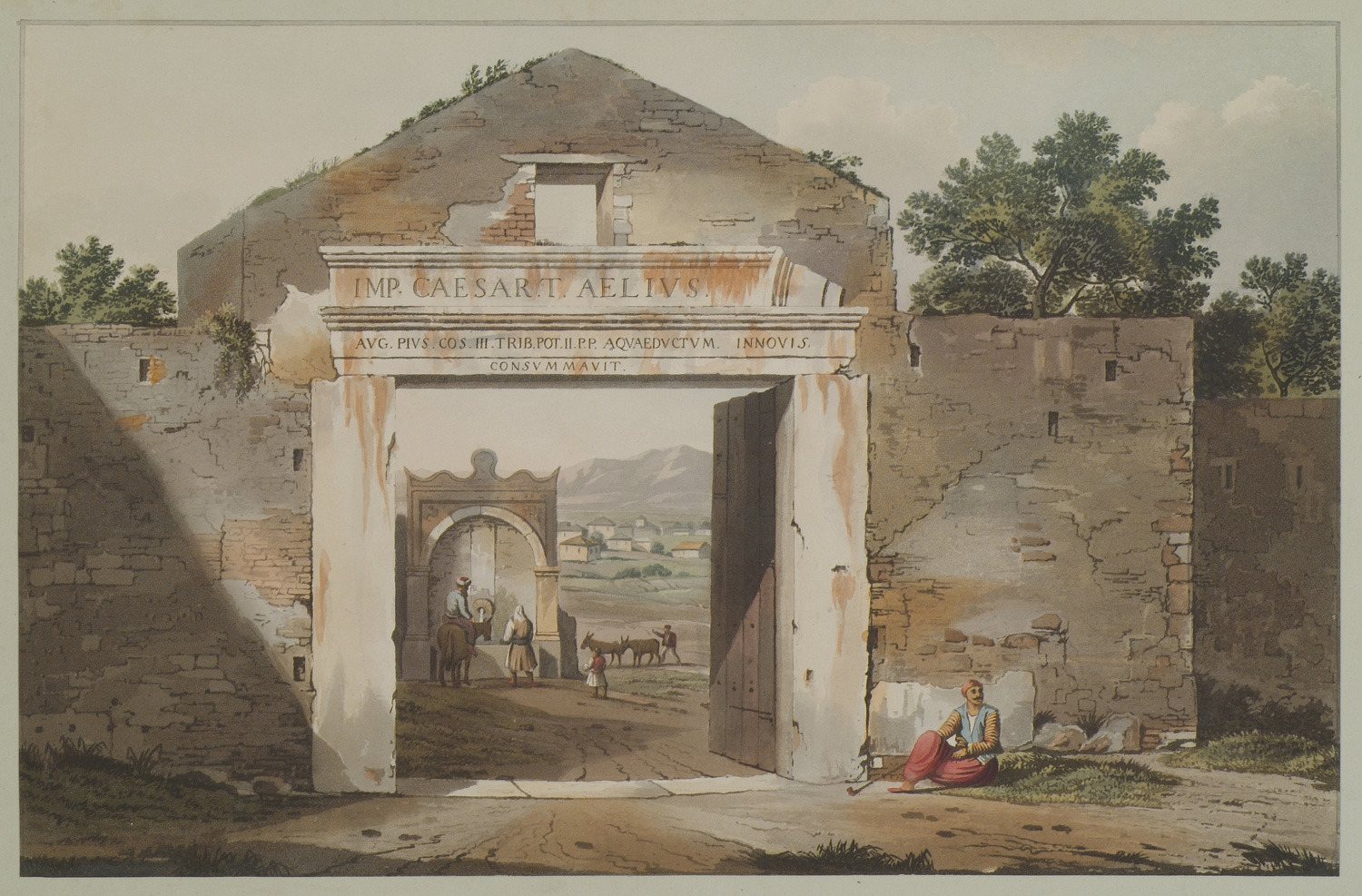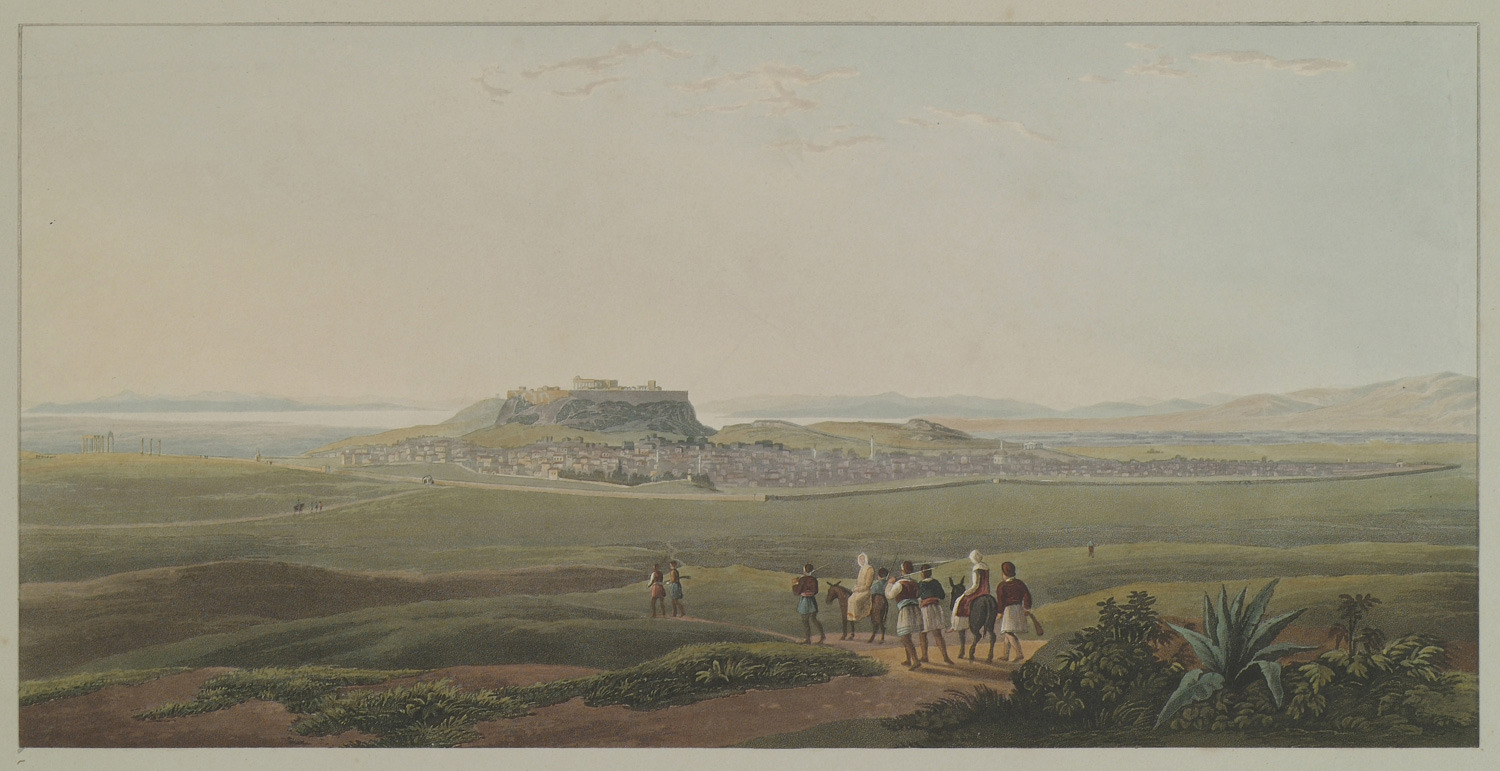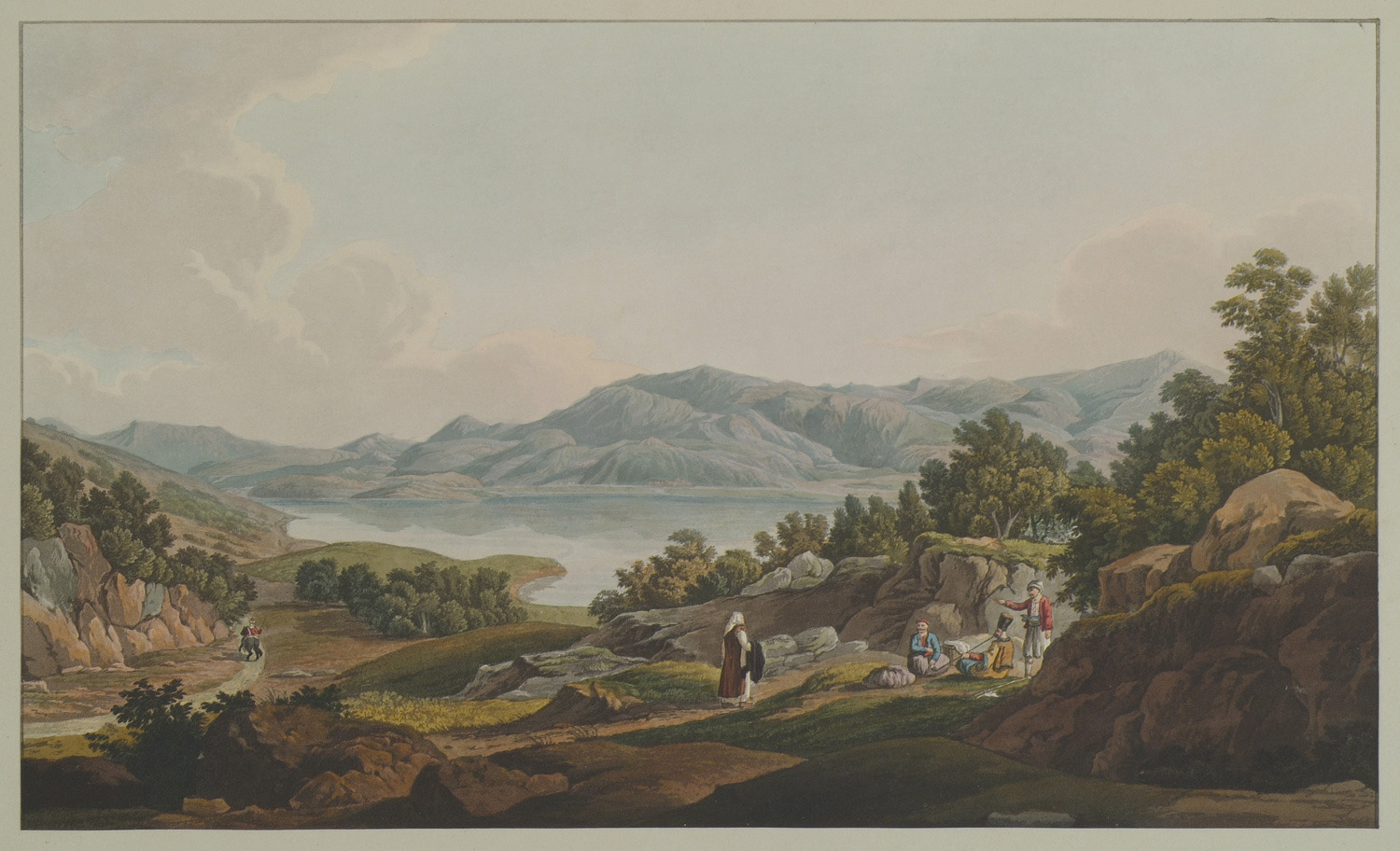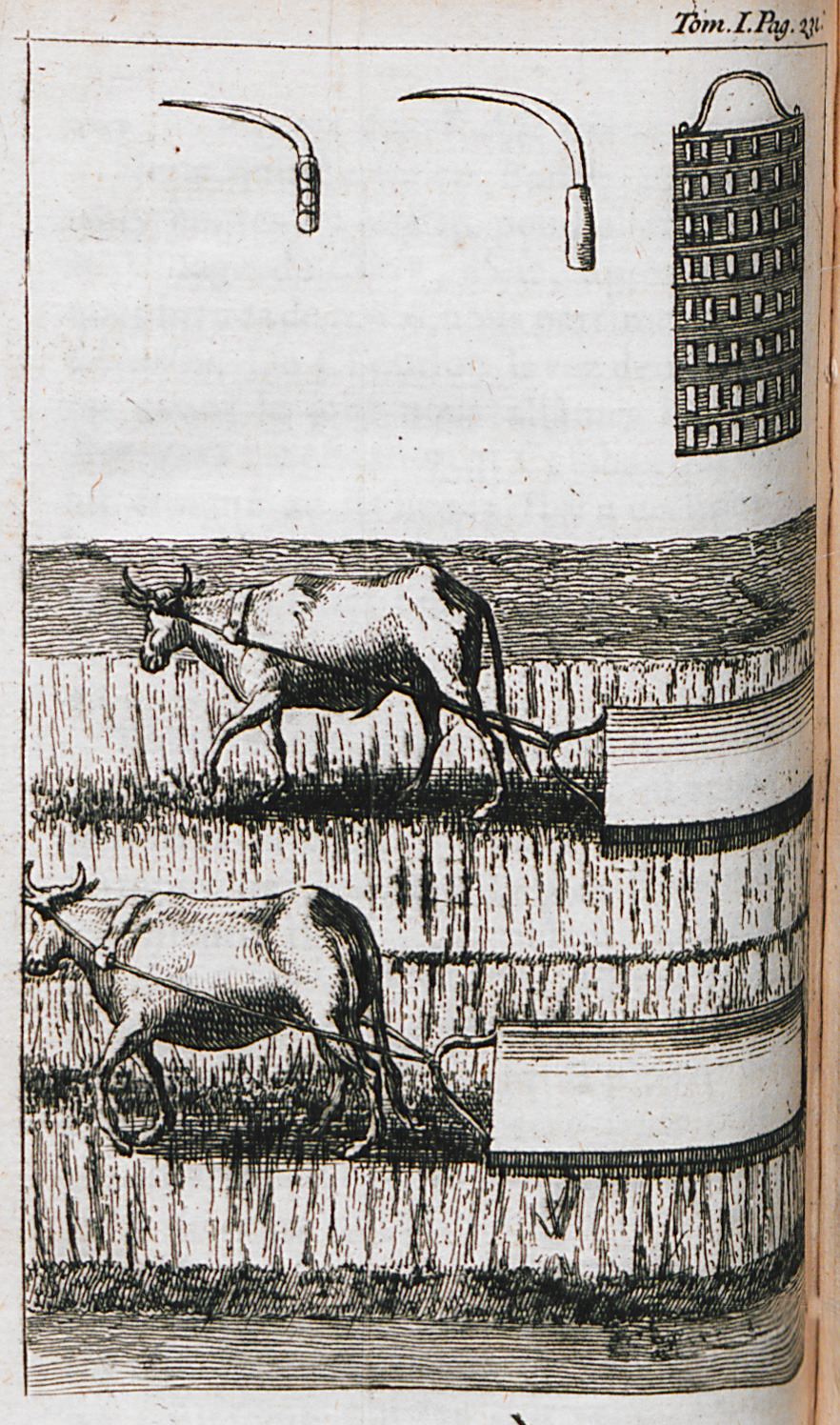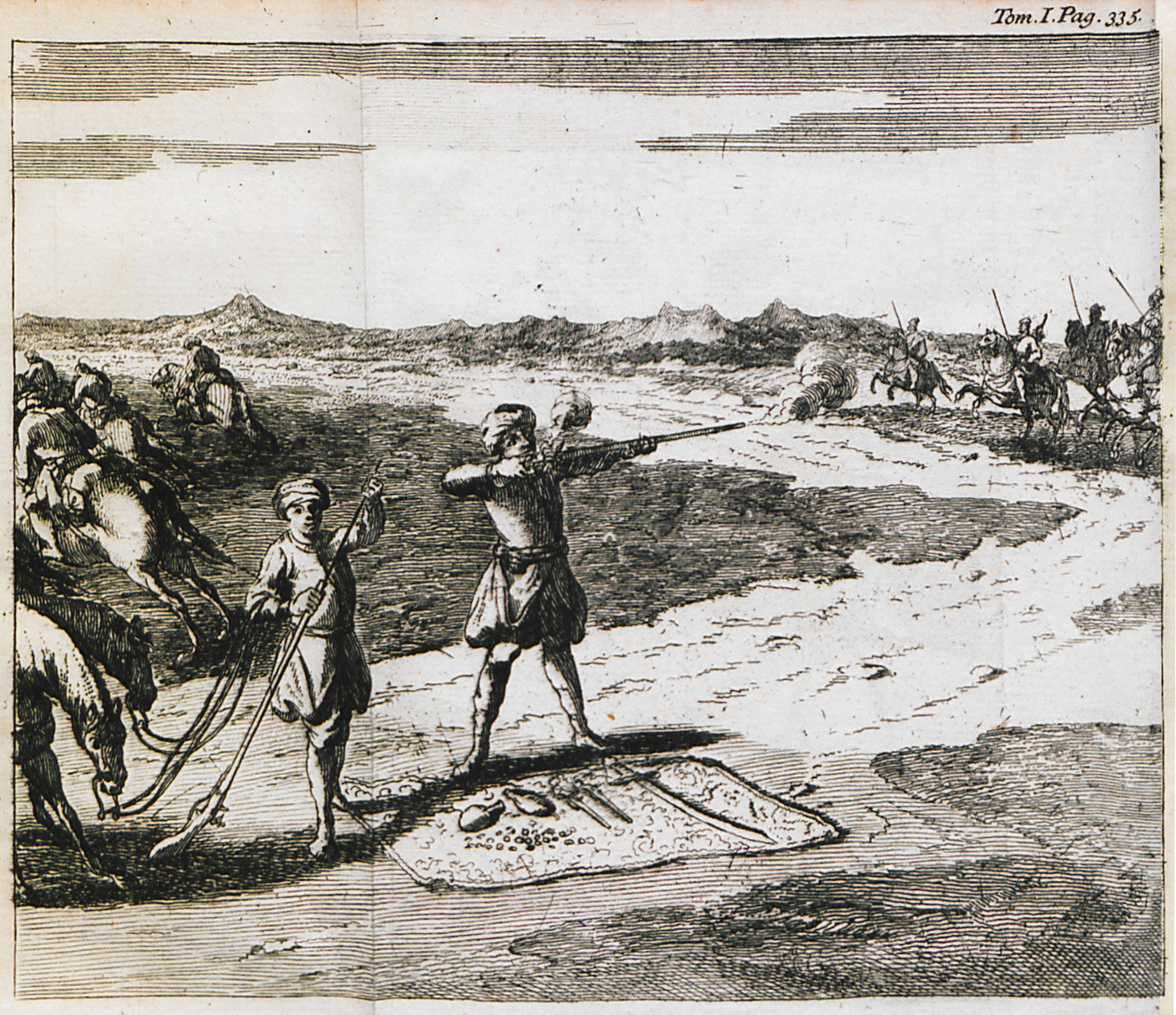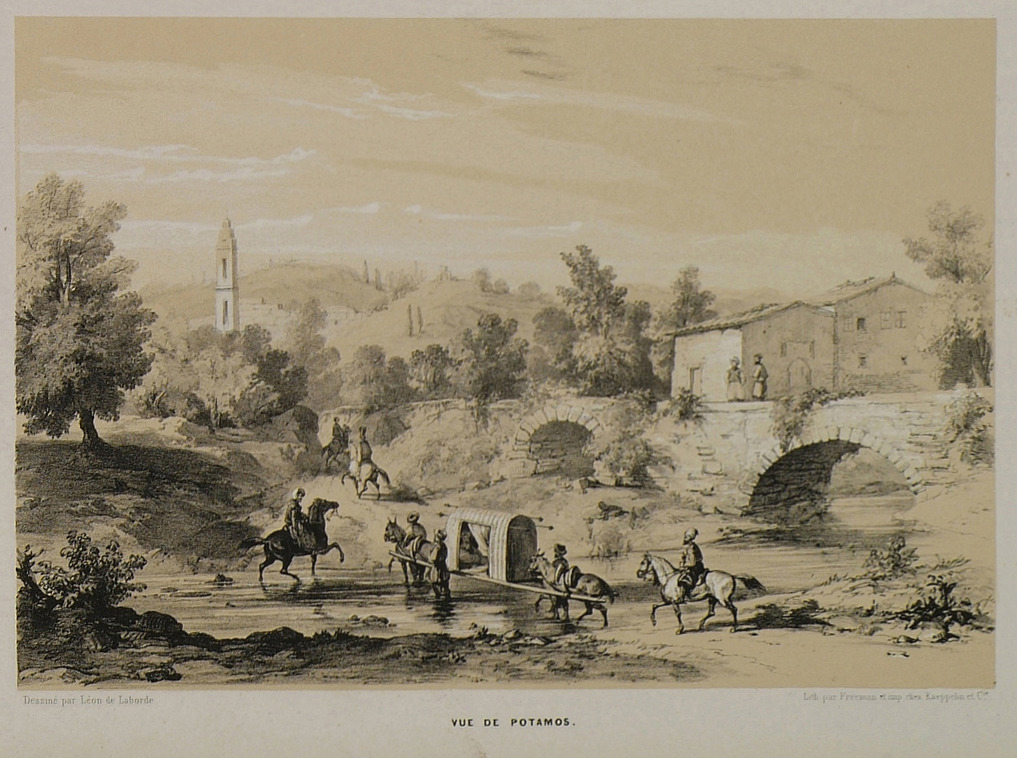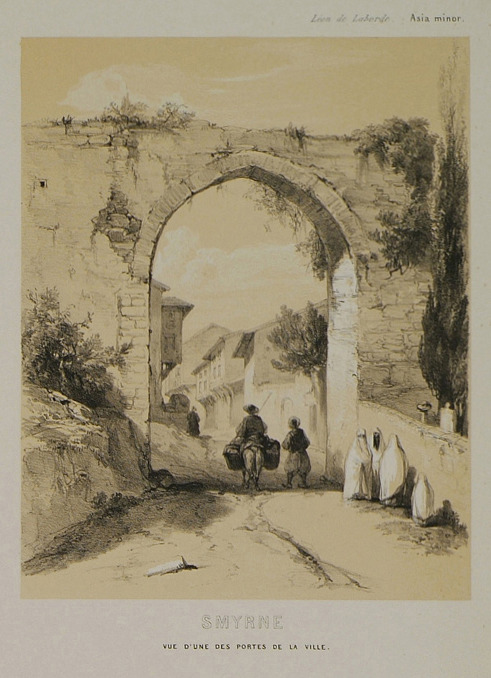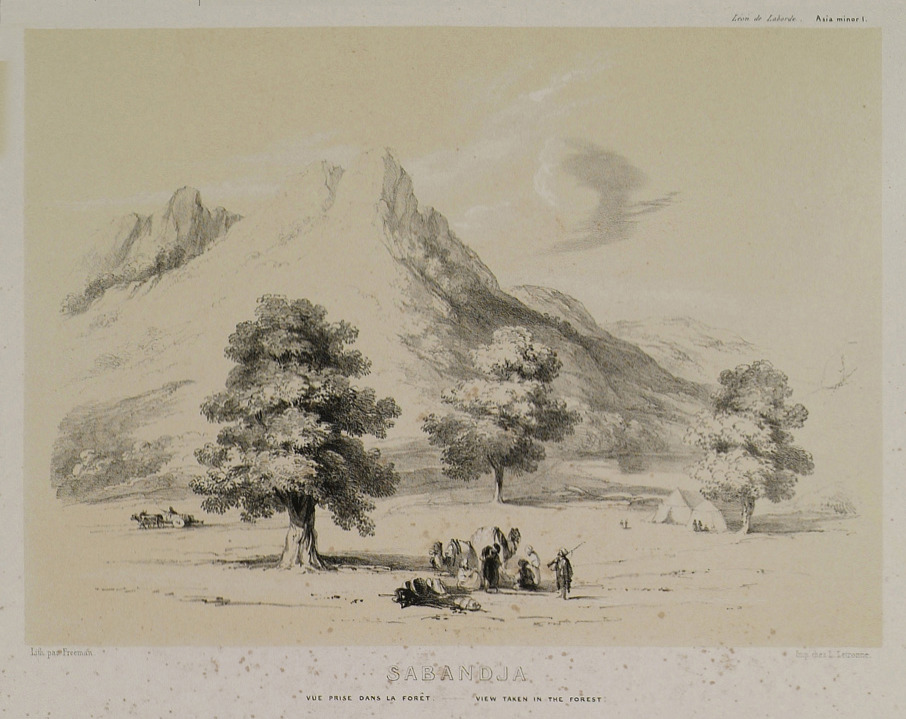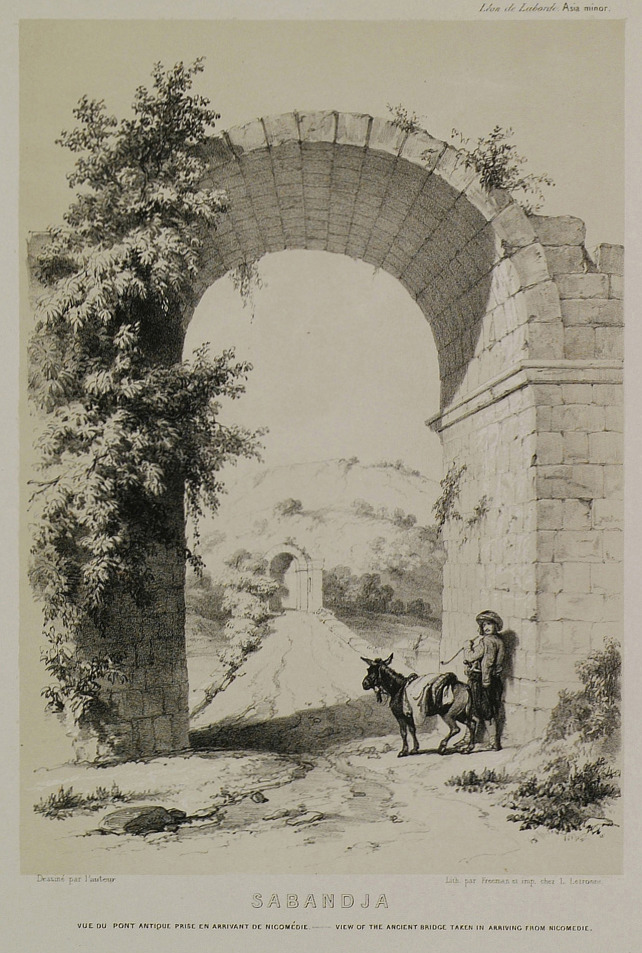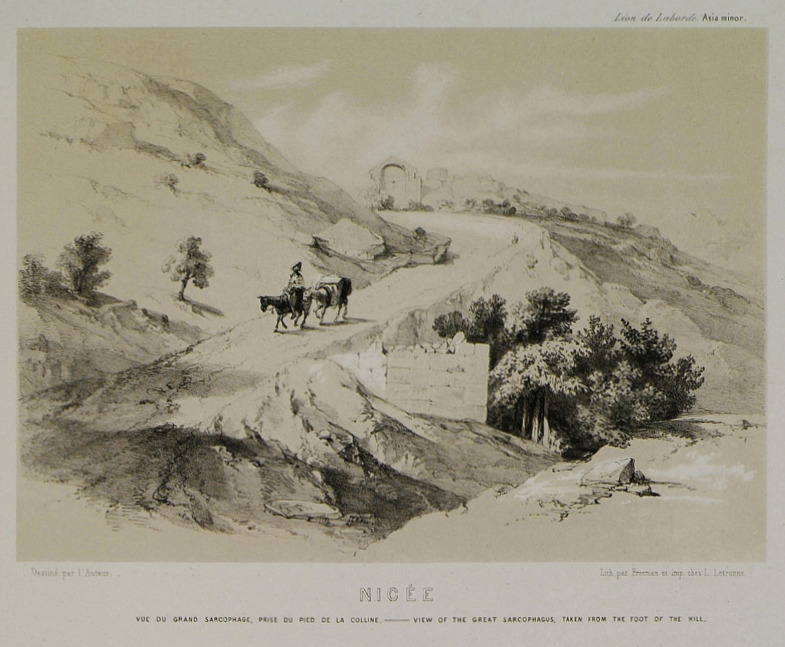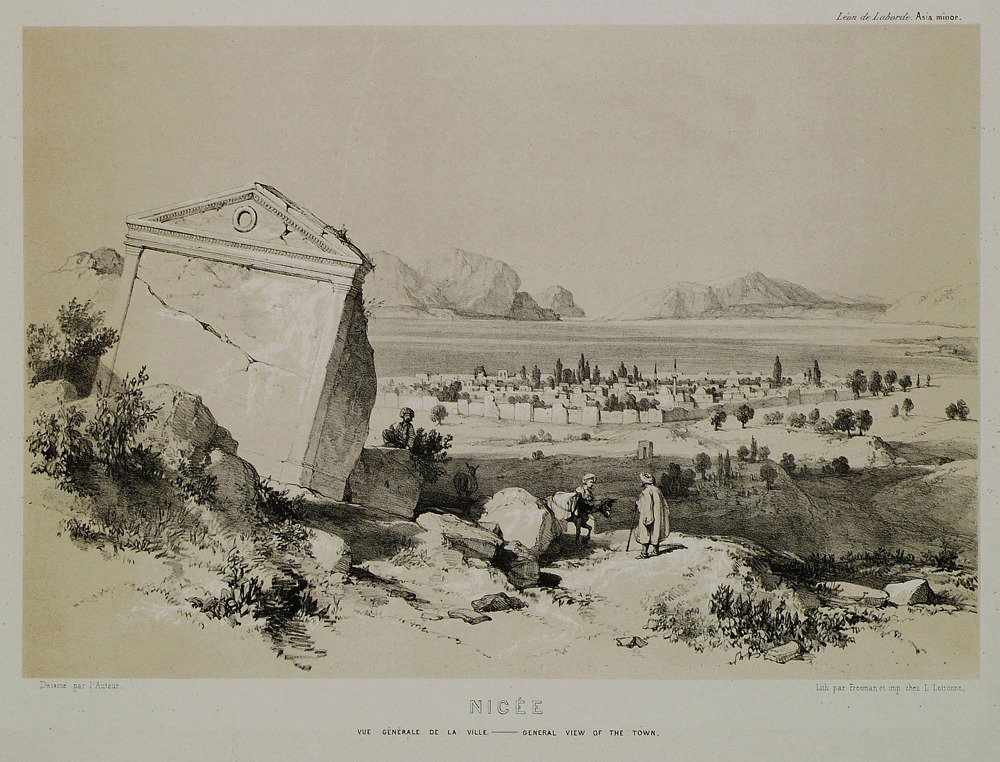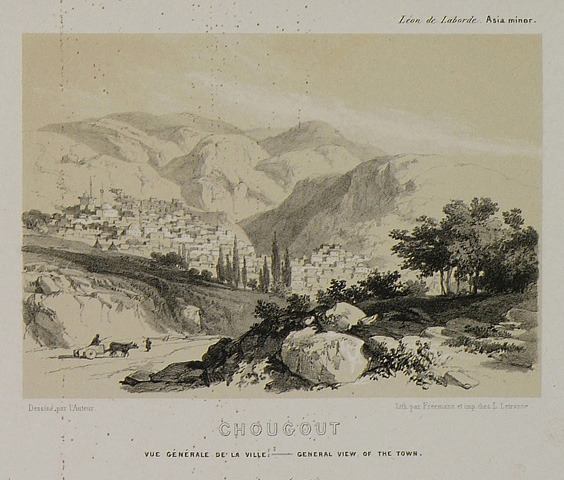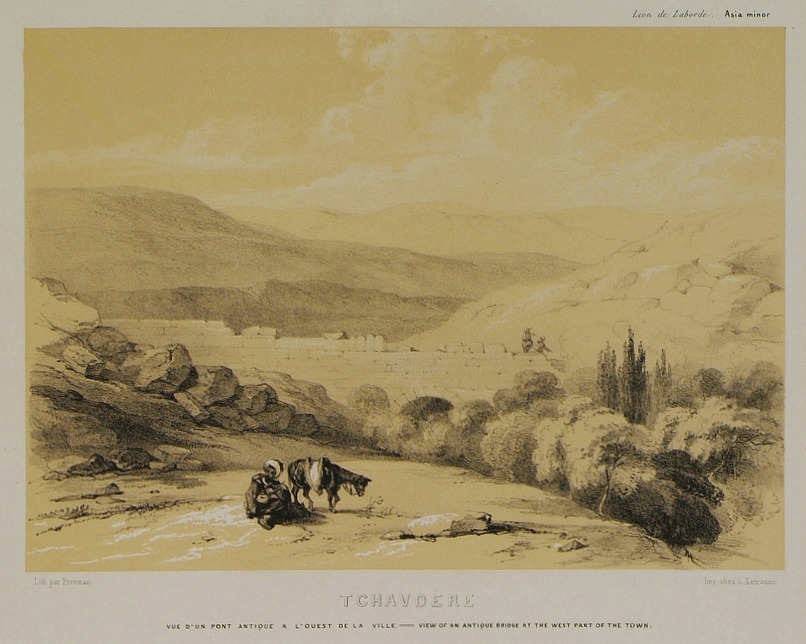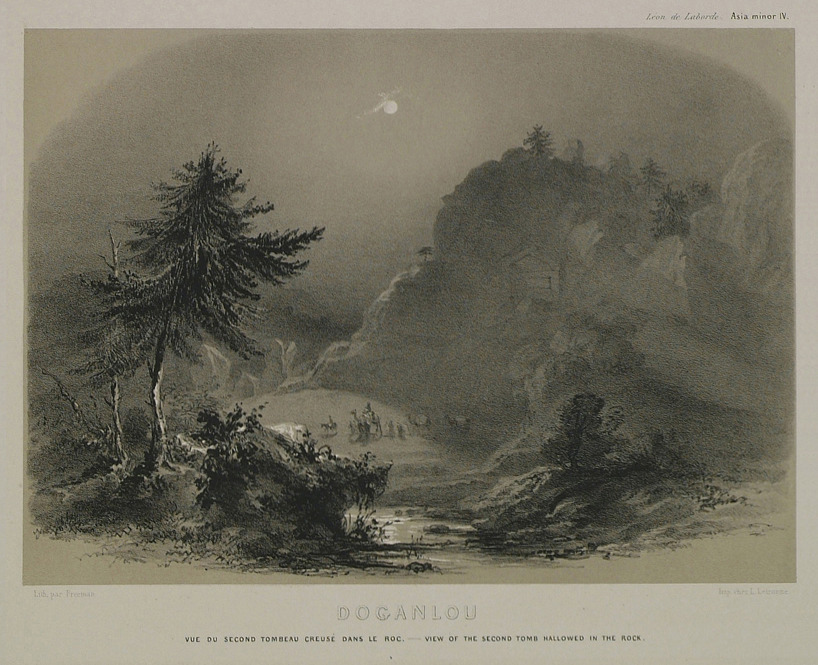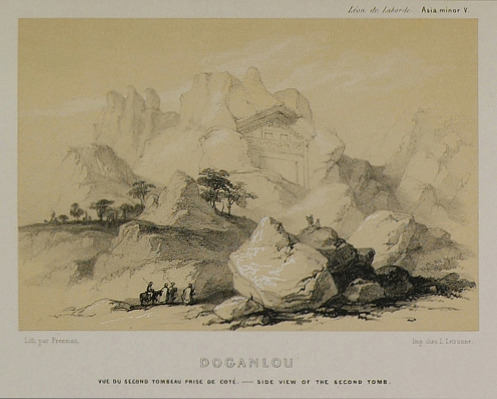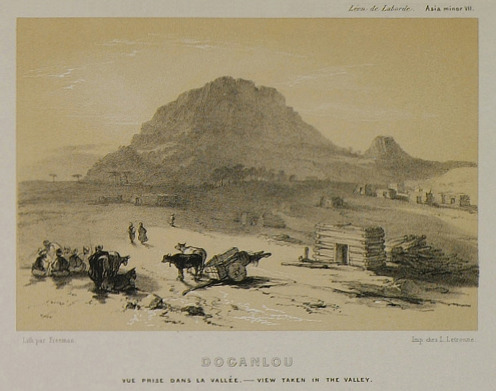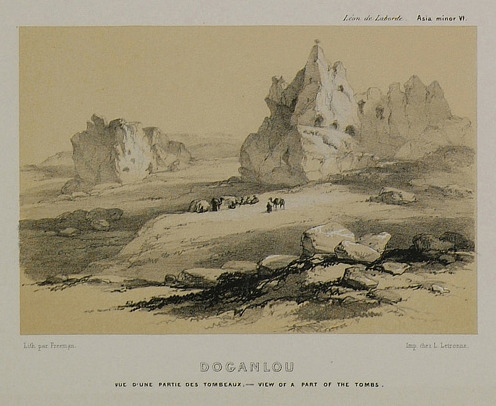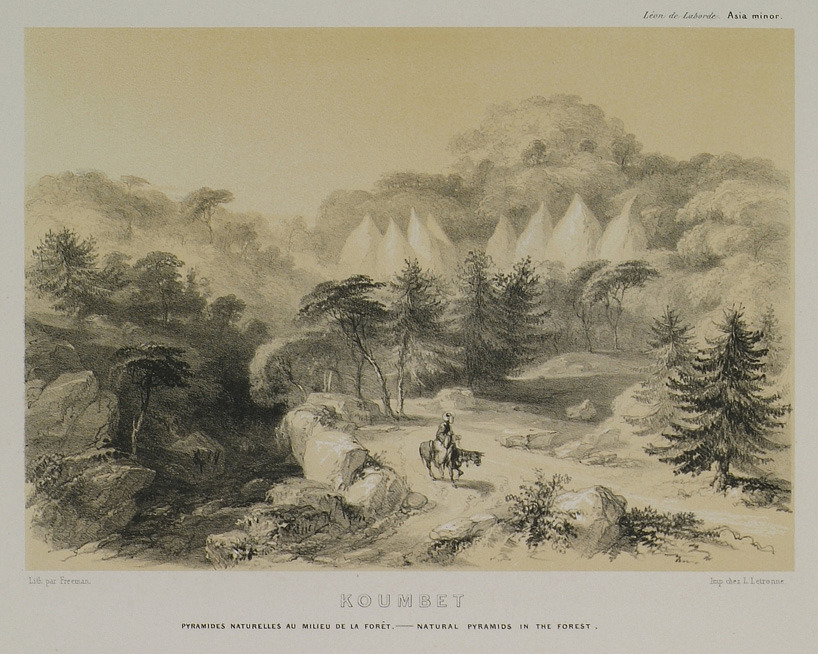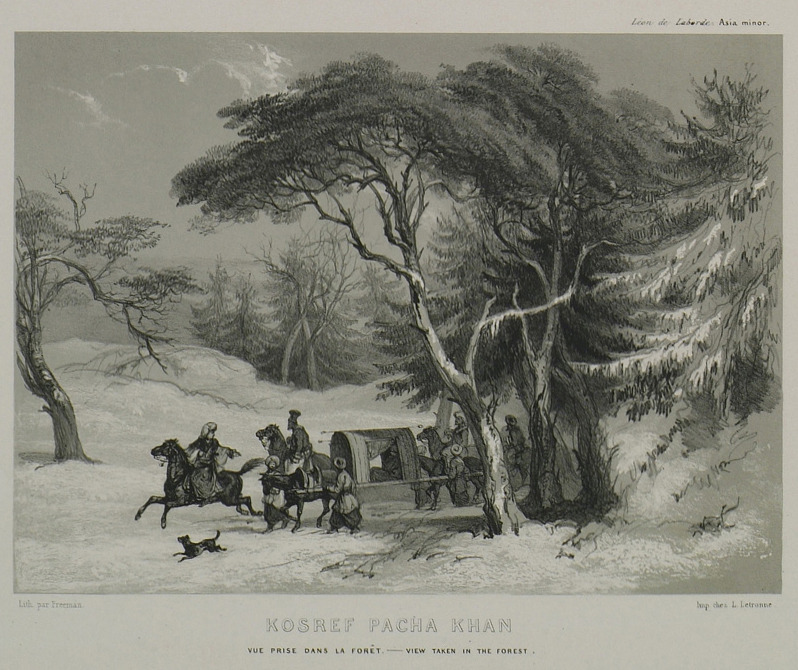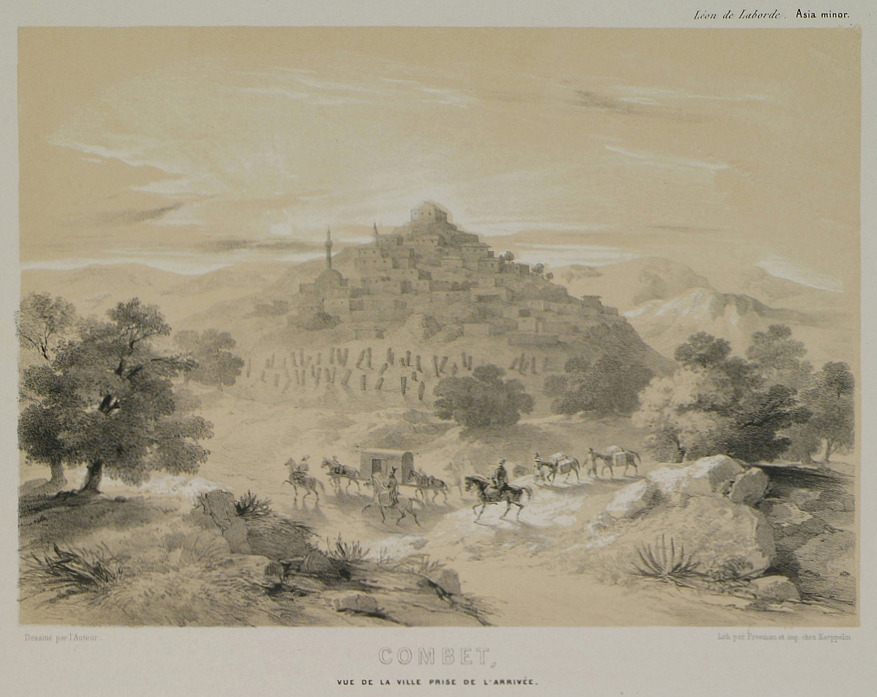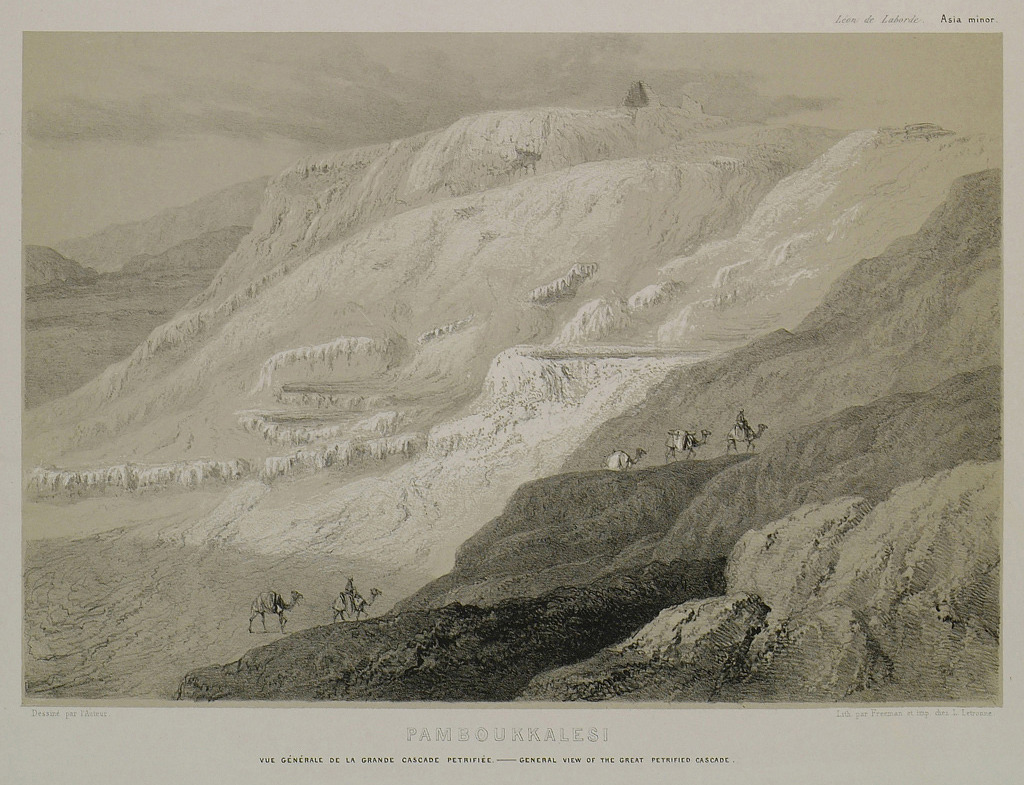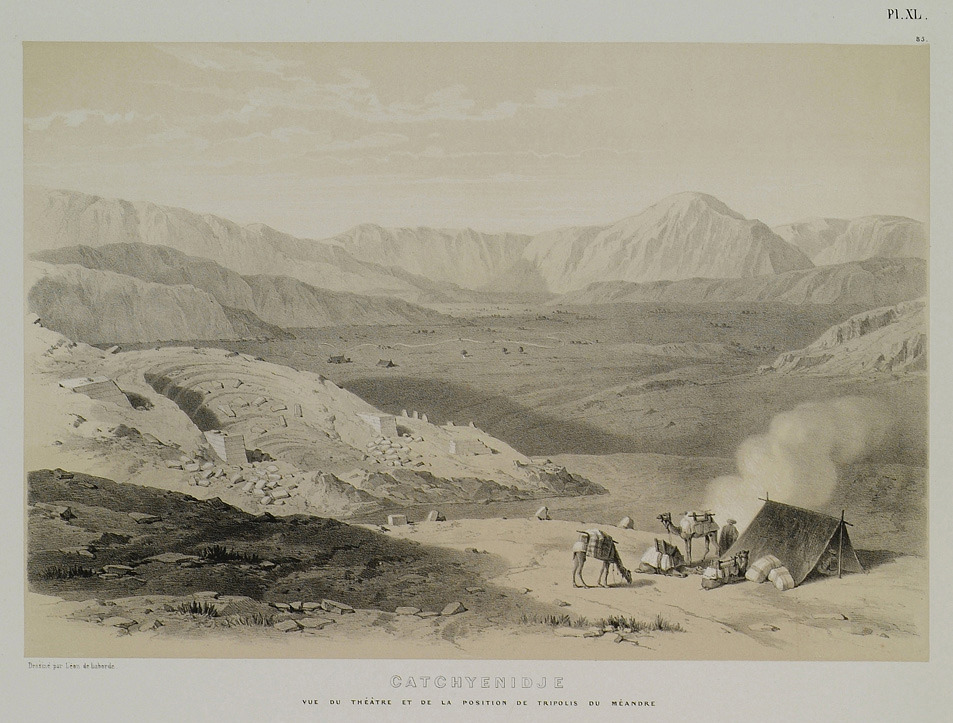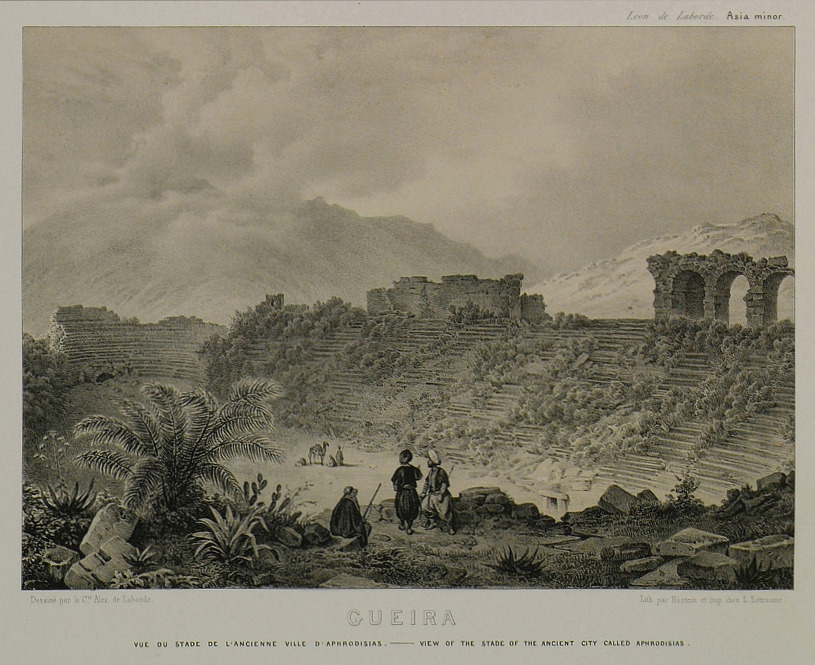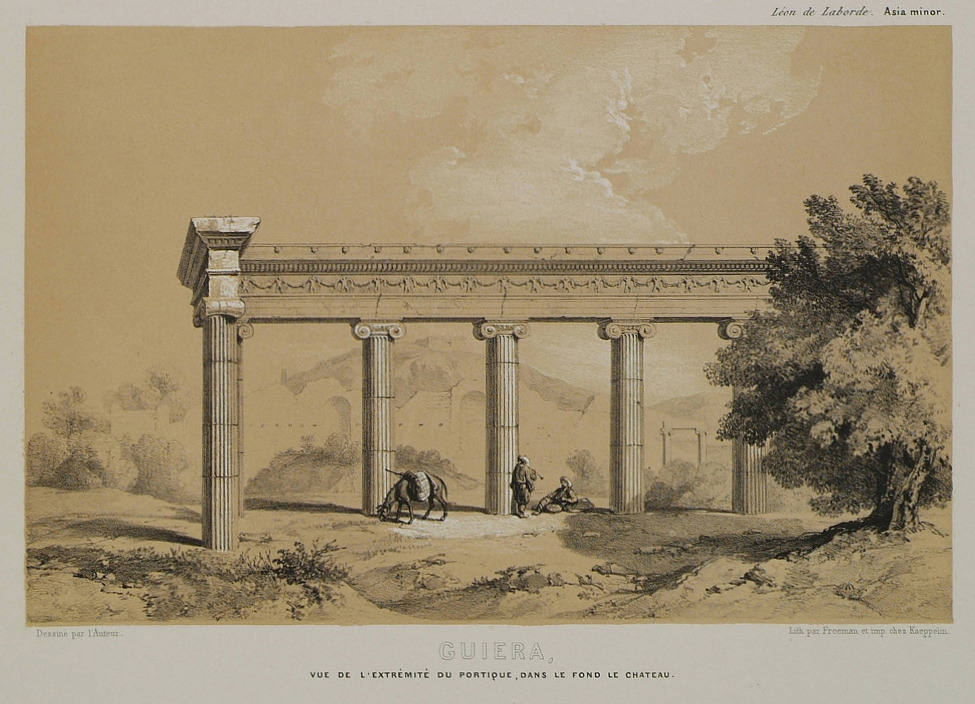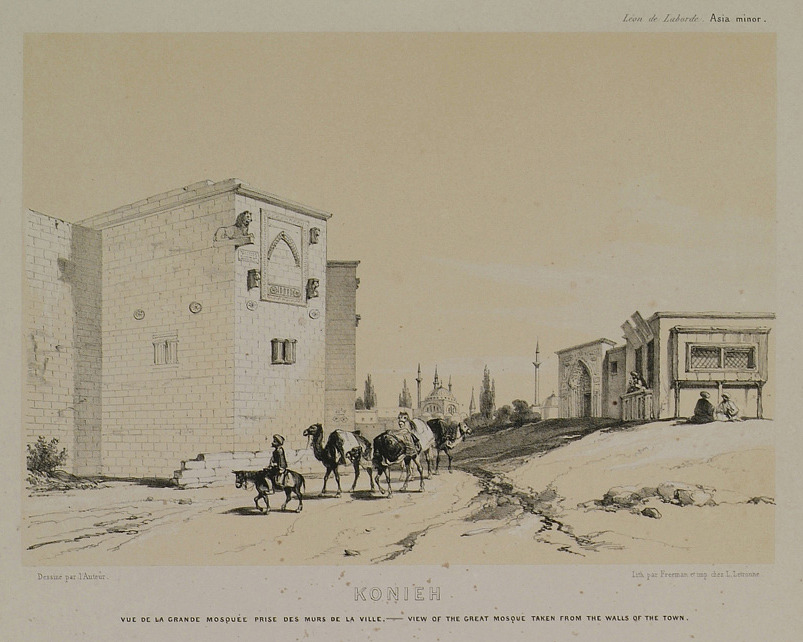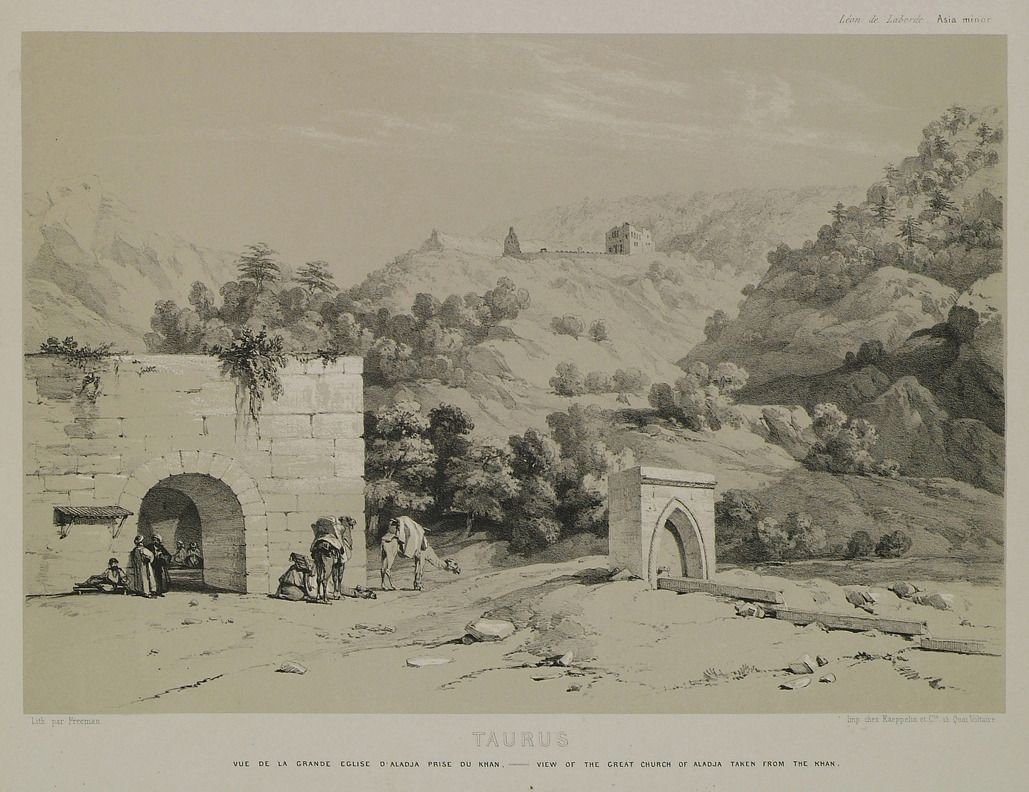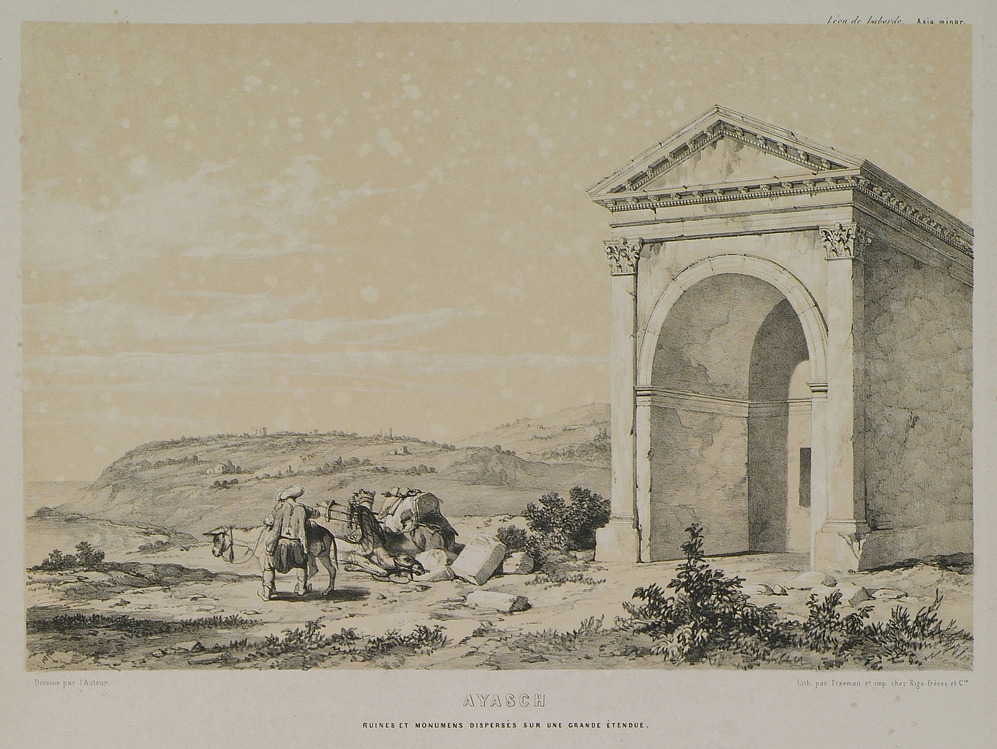Pack animals (61 Subjects)
Town and harbour of Corfu. From the island of Vido.
The ford at Perama, Corfu.
The bazaar of Athens. On the forefront, on the right, an emancipated African slave. On the doorway, the owner of the coffeehouse who is brigning a tray with coffee to the Ottoman governor Disdar Aga. Disdar Aga is sitting on the stairs, dressed in red, and next to him sits another Turkish aga. Standing at the entrance of the coffeehouse, the Greek voivode (governor) of Salamis island, who is conversing a Greek Baratario (protegé of a foreign power). At the centre of the picture, three Turkish women covered with long white veils. According to Edward Dodwell's description, the rest of the women depicted are Arvanite. Standing, on the right, a devout Muslim in green costume, an indication that he has made the pigrimage to Mecca.
The Gate of Mesogeia or Gate of Boubounistra, which was situated at the present-day junction of Amalias avenue with Othonos street. In the background, the fountain of Boubounistra.
Athens from the feet of Lycabettus Hill.
Lake Stymphalia, Corinthia.
Reaping tools. Plowing with device drawn by oxen, Eastern Thrace, possibly Lüleburgaz area.
Paul Lucas and his travelling companions fend off a band of Turkoman bandits near Karapınar, Asia Minor.
View of Caravan Bridge, Izmir.
City gate of Izmir.
Landscape at lake Sapanca (gr. Boane), on the outskirts of Izmit. In the background, on the left, an oxcart carrying wood to Istanbul, to repair damages caused by the fires.
View of the bridge of Justinian or Sangarius Bridge. The bridge is situated on Sangarius (Sakarya) river, near Sabanca lake, outside Adapazari, on the route from Iznik to Izmit. Today the bed of Sangarius lies to the east of the bridge, which only covers the smaller tributary Sark Deresi river (anc. Melas). On the foreground, the now-lost triumphal arch at the western end of the bridge.
The sarcophagus of Nicaea, on the outskirts of the city.
General view of Iznik (Nicaea).
General view of the the city of Sögüt, birthplace of Sultan Osman I, in Bithynia.
One of the Roman bridges over Penkalas river in Çavdarhisar, Asia Minor, to the west of the city.
View of the rock-cut monument known as “small Yazılıkaya” in Doganli valley (today Yazılıkaya) near Eski Sehir. This ancient site is also called Midas City due to its plethora of Phrygian monuments, and forms part of the Phrygian valley.
Side view of the rock-cut monument known as “small Yazılıkaya” in Doganli valley (today Yazılıkaya) near Eski Sehir. This ancient site is also called Midas City due to its plethora of Phrygian monuments, and forms part of the Phrygian valley.
View of Doganli valley (today Yazılıkaya) near Eski Sehir. This ancient site is also called Midas City due to its plethora of Phrygian monuments, and forms part of the Phrygian valley.
View of the rock-cut monuments in Doganli valley (today Yazılıkaya) near Eski Sehir. This ancient site is also called Midas City due to its plethora of Phrygian monuments, and forms part of the larger territory of the Phrygian valley.
Natural rock formations in the village of Kümbet, Asia Minor.
Forest in the region called Kosref Pasha Khan, near Afyon Karahisar.
View of Kümbet village.
Travertine terraces in Pamukkale.
The remains of the ancient theatre of Tripolis of Phrygia, in modern-day Yenicekent, Asia Minor.
View of the stadium of Aphrodisias in Caria.
Partial view of the Portico of Tiberius in the Agora of Aphrodisias of Caria.
The architectural complex (külliye) comprising the mausoleum of Jalal ad-Din Muhammad Rumi and the Mevlevi dervish lodge, today Mevlana museum of Konya, seen from the city walls.
The remains of a church on Alaca plateau, Erdemli, seen from the local inn.
Ancient monument in Ayas, Cilicia. Ancient ruins in the background.


